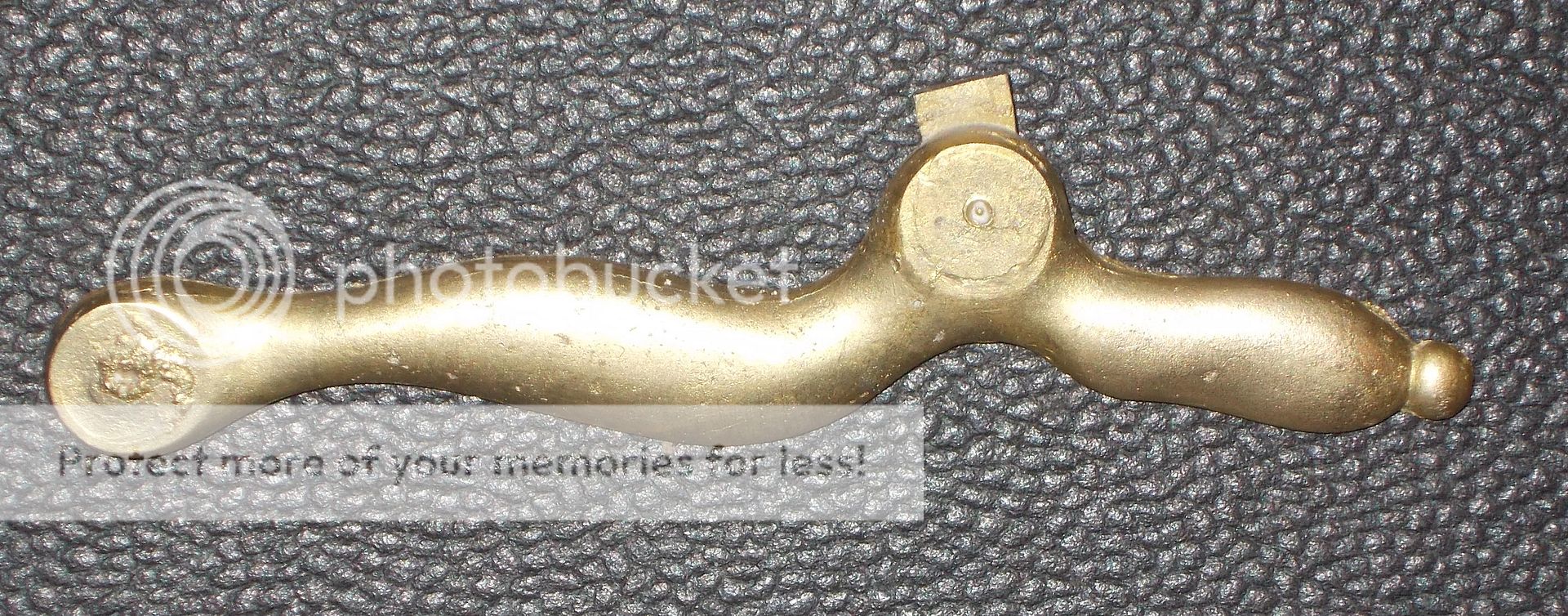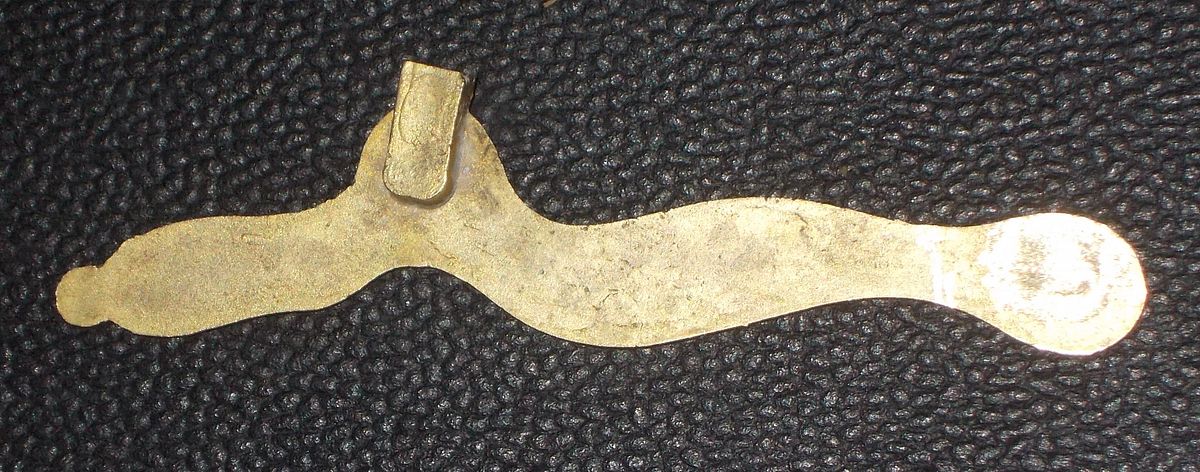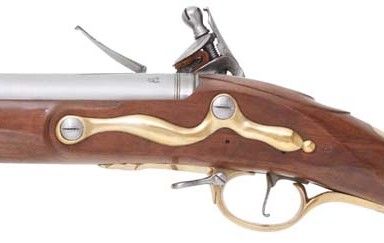About, I dunno, ten years ago I wrote to The Rifle Shoppe to see if they would consider making a drop-in convex sideplate for Pedersoli Besses for those of us who wanted to make ours look more like an older pattern. Lo and behold, I was browsing their site and saw under the New Products section a rounded sideplate for the Navy Arms Brown Bess. Now, that could have meant either the Pedersoli or the Miroku, but I took a chance and ordered one two weeks ago. Just got it today, and it looks like it could be a drop-in fit. There are two casting gates on the back preventing me from lining it up on the old flat sideplate, but it looks good just eyeballing it. As long as there isn't casting shrinkage, I'm feeling pretty optimistic. Should be able to clean it up and install it next week.
Between that and polishing off the lock markings, I think I'll have a pretty reasonable facsimile of a commercial musket that's not inappropriate for F&I War.
Between that and polishing off the lock markings, I think I'll have a pretty reasonable facsimile of a commercial musket that's not inappropriate for F&I War.









